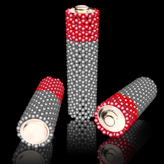With carbon nanotubes, researchers boost energy capacity of lithium batteries
 Massachusetts Institute of Technology researchers have found that using carbon nanotubes in lithium batteries could improve their capacity for energy.
Massachusetts Institute of Technology researchers have found that using carbon nanotubes in lithium batteries could improve their capacity for energy.The researchers, led by professors Yang Shao-Horn and Paula Hammond, found that using the nanotubes for one of the battery’s electrodes produced a significant increase — up to tenfold — in the amount of power it could deliver compared to a conventional lithium battery.
The development could help improve the power capacity of batteries for portable devices such as smartphones, tablet computers and medical equipment.
To see how Klean Industries is producing and using carbon nanotubes to improve energy products cost effectively please click here.
The researchers used a layer-by-layer fabrication method to make the material for the new electrode.
To do so, they alternately dipped a base material in solutions containing carbon nanotubes treated with simple organic compounds that give them either a positive or negative net charge.
Alternated on a surface, the layers bond tightly together to make a stable and durable film, thanks to the complementary charges.
Conventional lithium-ion batteries consist of three components: two electrodes (the negative “anode” and positive “cathode”) separated by an electrically conductive material called an electrolyte.
During use, positively charged lithium ions travel across the electrolyte to the cathode, producing an electric current. During charging, an external current helps the ions move the opposite way, where they become embedded in the spaces in the porous material of the anode.
In the new electrode, carbon nanotubes — sheets of carbon atoms rolled up into tiny tubes — self-assemble into a tightly bound structure that is porous at the nanometer scale. The carbon nanotubes have many oxygen groups on their surfaces, which allows them to store a large number of lithium ions.
That means the carbon nanotubes can serve as the positive electrode instead of only the negative one.
The new material helps batteries express traits of both capacitors — which produce very high power outputs in short bursts — and lithium batteries, which provide lower power steadily for long periods.
The energy output to weight ratio of the new material was five times better than a conventional capacitor, and its total power delivery rate was 10 times that of conventional lithium batteries.
Better still, it demonstrated good stability over time, and showed no change in performance after 1,000 cycles, the researchers said.
The benefits of the material are numerous: in addition to portable electronics, the material in a thicker form (hundreds of microns) could feasibly be used in hybrid cars. The question, of course, is whether the dipping process can scale efficiently for mass production.
Their research, authored by Seung Woo Lee and Naoaki Yabuuchi, was published in the June 20 edition of the journal Nature Nanotechnology.
Illustration: MIT
You can return to the main Market News page, or press the Back button on your browser.

